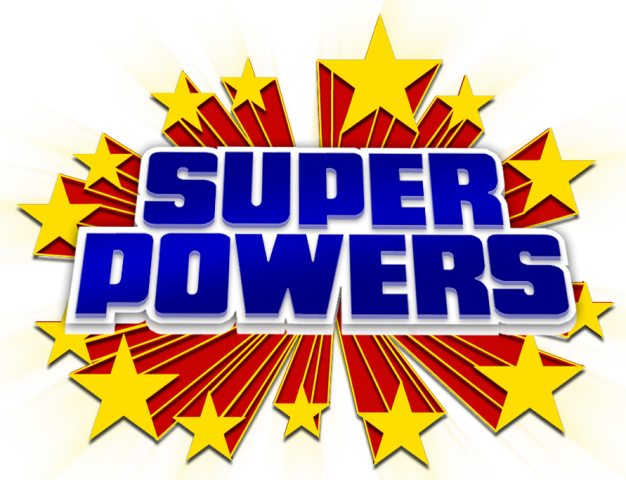

there is zero appreication for the work that you do to keep the business afloat.Ĥ. worst part is you as an employee will be blamed for their poor performance or disappearnace even though there is no way to hold them accountableģ. yes, they often abscond and leave you hanging. 100% of the business is dependent on freelance writers around the world. you will be aksed to lie to them when deliverables are not ready due to absconded writersĢ. bosses who lie to not only employees but also clients.

In the 3 years that i worked here, there were countless cons that i don't know where to begin.
#Superscribe the power of code
block ) ASCII code 24 = CAN ( Cancel ) ASCII code 25 = EM ( End of medium ) ASCII code 26 = SUB ( Substitute ) ASCII code 27 = ESC ( Escape ) ASCII code 28 = FS ( File separator ) ASCII code 29 = GS ( Group separator ) ASCII code 30 = RS ( Record separator ) ASCII code 31 = US ( Unit separator ) ASCII code 127 = DEL ( Delete ) Printable ASCII characters :ĪSCII code 32 = space ( Space ) ASCII code 33 = ! ( Exclamation mark ) ASCII code 34 = " ( Double quotes Quotation mark speech marks ) ASCII code 35 = # ( Number sign ) ASCII code 36 = $ ( Dollar sign ) ASCII code 37 = % ( Percent sign ) ASCII code 38 = & ( Ampersand ) ASCII code 39 = ' ( Single quote or Apostrophe ) ASCII code 40 = ( ( round brackets or parentheses, opening round bracket ) ASCII code 41 = ) ( parentheses or round brackets, closing parentheses ) ASCII code 42 = * ( Asterisk ) ASCII code 43 = + ( Plus sign ) ASCII code 44 =, ( Comma ) ASCII code 45 = - ( Hyphen, minus sign ) ASCII code 46 =. The operating system of this model, the "MS-DOS" also used this extended ASCII code.Īlmost all computer systems today use the ASCII code to represent characters and texts.ĪSCII code 00 = NULL ( Null character ) ASCII code 01 = SOH ( Start of Header ) ASCII code 02 = STX ( Start of Text ) ASCII code 03 = ETX ( End of Text, hearts card suit ) ASCII code 04 = EOT ( End of Transmission, diamonds card suit ) ASCII code 05 = ENQ ( Enquiry, clubs card suit ) ASCII code 06 = ACK ( Acknowledgement, spade card suit ) ASCII code 07 = BEL ( Bell ) ASCII code 08 = BS ( Backspace ) ASCII code 09 = HT ( Horizontal Tab ) ASCII code 10 = LF ( Line feed ) ASCII code 11 = VT ( Vertical Tab, male symbol, symbol for Mars ) ASCII code 12 = FF ( Form feed, female symbol, symbol for Venus ) ASCII code 13 = CR ( Carriage return ) ASCII code 14 = SO ( Shift Out ) ASCII code 15 = SI ( Shift In ) ASCII code 16 = DLE ( Data link escape ) ASCII code 17 = DC1 ( Device control 1 ) ASCII code 18 = DC2 ( Device control 2 ) ASCII code 19 = DC3 ( Device control 3 ) ASCII code 20 = DC4 ( Device control 4 ) ASCII code 21 = NAK ( NAK Negative-acknowledge ) ASCII code 22 = SYN ( Synchronous idle ) ASCII code 23 = ETB ( End of trans. IBM includes support for this code page in the hardware of its model 5150, known as "IBM-PC", considered the first personal computer. In this way was added the ASCII characters ranging from 128 to 255.

Also 128 characters were added, with new symbols, signs, graphics and latin letters, all punctuation signs and characters needed to write texts in other languages, such as Spanish. In 1981, IBM developed an extension of 8-bit ASCII code, called "code page 437", in this version were replaced some obsolete control characters for graphic characters. So with this set of only 128 characters was published in 1967 as standard, containing all you need to write in English language. This code arises from reorder and expand the set of symbols and characters already used in telegraphy at that time by the Bell company.Īt first only included capital letters and numbers, but in 1967 was added the lowercase letters and some control characters, forming what is known as US-ASCII, ie the characters 0 through 127. The American Standard Code for Information Interchange, or ASCII code, was created in 1963 by the "American Standards Association" Committee or "ASA", the agency changed its name in 1969 by "American National Standards Institute" or "ANSI" as it is known since.


 0 kommentar(er)
0 kommentar(er)
